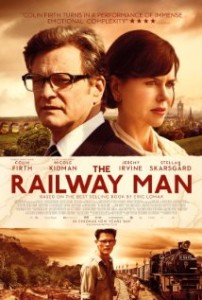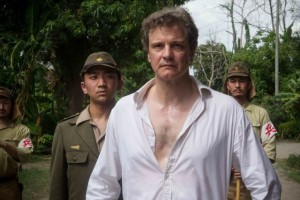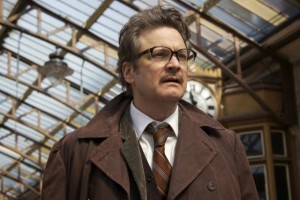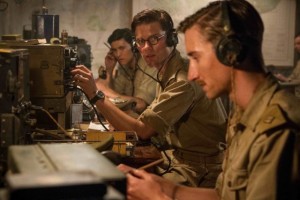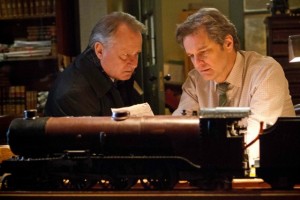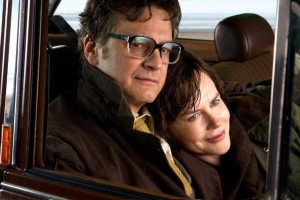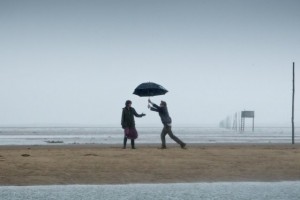The Railway Man *** (2013, Colin Firth, Nicole Kidman, Jeremy Irvine, Stellan Skarsgård) – Movie Review
Based on his autobiography, this is the upsetting and honourable true story about Englishman Eric Lomax, one of thousands of Allied prisoners working like slaves on the construction of the Thai/Burma ‘Death Railway’ during World War Two.
In a part that fits him like the proverbial glove, Colin Firth plays the postwar, middle-aged version of Lomax, still tormented by his capture and torture by the Japanese. He plays this haunted, stiff-upper-lip character perfectly. The film’s worth seeing just for him.
Jeremy Irvine is excellent too as his young self in flashback, an eager-beaver, geeky, bespectacled engineer who, while working on the railway, with suicidal bravery confesses to the Japanese that he’s the one responsible for building an illegal radio. Tanroh Ishida playsTakashi Nagase, the youngJapanese soldier who delights in torturing him, in scenes desperately hard to watch.
Back in the postwar main part of the story, Lomax learns that Nagase is still alive and, to exorcise his demons, he goes back to Japan and the Kanchanaburi POW camp where he was systematically tortured. It’s now an eerie war museum, virtually unchanged, and Lomax hangs around till closing time to seek out and meet the middle-aged version of Nagase (Hiroyuki Sanada), who is now a tour guide there. Lomax understandably initially wants to beat and kill Nagase.
Firth makes a truly honest, affecting job of making you feel Lomax’s mental pain and suffering, but somehow you can’t imagine Firth wanting to beat and kill someone. And, with a heart-rending story like this, this film should be much more moving. It’s an important, harsh story, but it’s been ironed out into a too-smooth film that has no rough edges and no challenges beyond the endurance of watching the torture scenes.
The writing by Frank Cottrell Boyce and Andy Paterson has produced an uneven screenplay where good scenes mix with clumsily handled ones, though to be fair this reflects the challenge of portraying some complex emotional moments, tricky scenes and tough issues.
The scene where the ironically lifelong railway enthusiast Lomax meets his future wife Patti on a train plays out almost like a parody of a scene from Brief Encounter, but Firth and Nicole Kidman make it work beautifully. Kidman, replacing Rachel Weisz, is a bit to clipped and over-precise and studied, both with her English accent and performance, but she’s fine. It’s hard to understand why she likes and loves Firth’s railway geek and tormented soul Lomax, but we can take it on trust.
It’s unfortunate that the scene where Lomax first re-encounters his torturer is slightly shaky and unconvincing. It’s well enough done, but the details and emotions just don’t feel quite right or totally convince. And their later eventual reconciliation with forgiveness, mutual respect and lifetime friendship is hard to get to grips with in the way it’s written and played at the climax. It just seems too easy, simple and pat after all we’ve seen already. But, then again, maybe it was exactly like this.
And then Stellan Skarsgård’s portrayal of Lomax’s fellow veteran Finlay, torn by his friend’s pain, is a powerful, appealing one, but the resolution of his story seems oddly rushed and abrupt. And incredibly depressing. What are we supposed to make of it or do with it?
In short, The Railway Man is a good, honourable, well-produced film that is worth seeing even if it just can’t quite pull itself up into Bridge on the River Kwai class. Its big theme of forgiveness is strongly stated, though again it doesn’t entirely persuade you.
Lomax having passed away recently, the real-life Patti Lomax attended the film’s world premiere at the Toronto Film Festival in 2013 and received a standing ovation.
Kanchanaburi POW camp wasn’t captured by American paratroops as shown in the film, but in reality was liberated by British and Indian infantry after Japan had surrendered. The film also take liberties with dates to speed the long narrative. The couple met in 1980 but didn’t marry until 1983. Eric didn’t learn that Takashi Nagase was still alive until 1993 and they met in 1995.
© Derek Winnert 2014 Movie Review
Check out more reviews on http://derekwinnert.com

